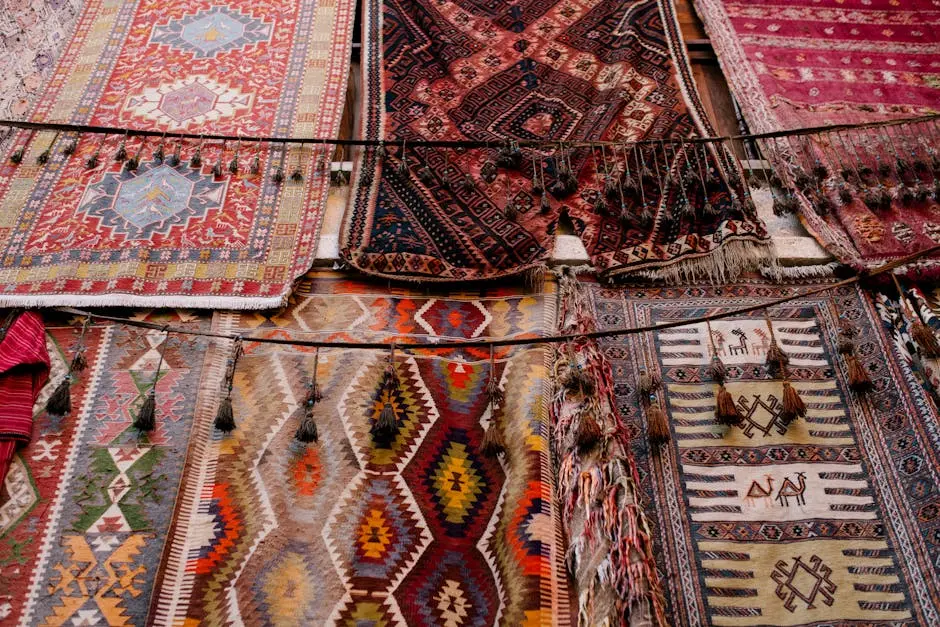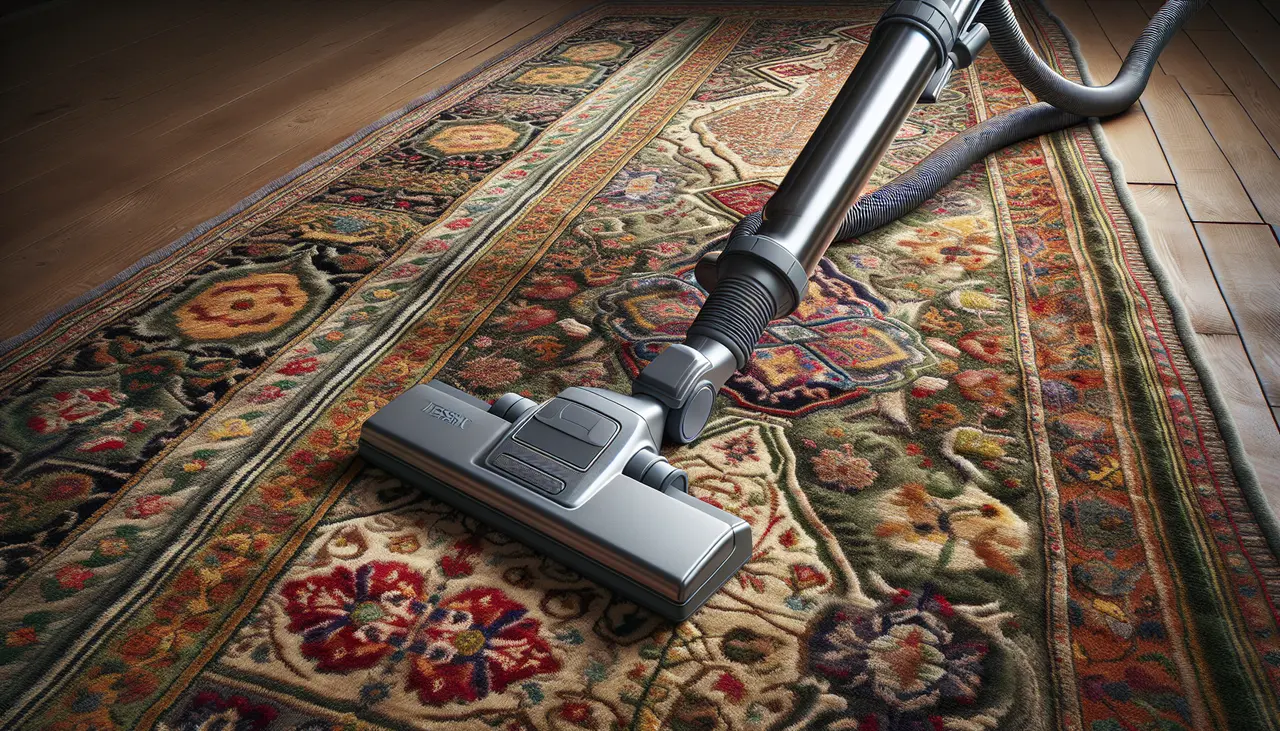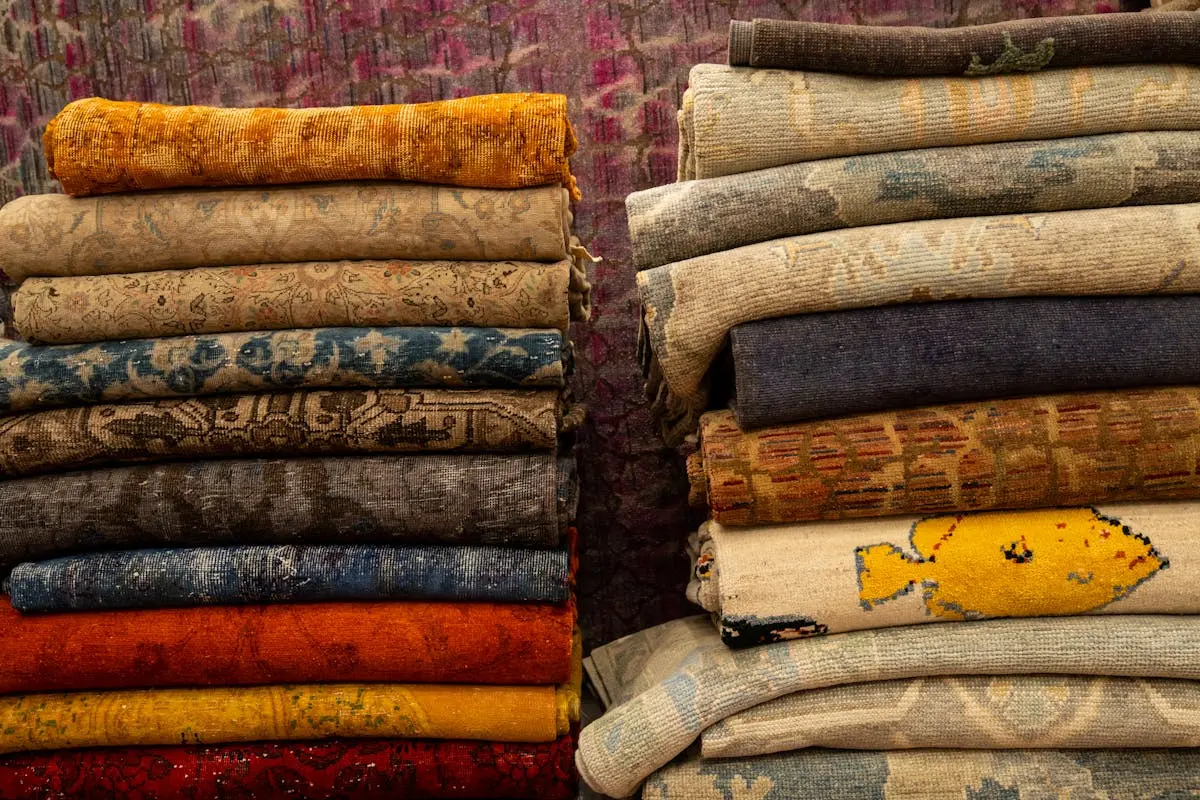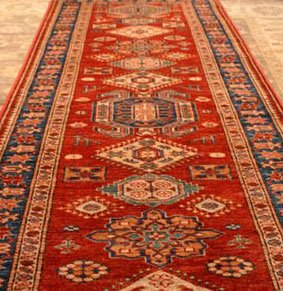Vintage rugs are a timeless addition to any space, adding character and history. To keep these treasures looking their best, proper care is essential. In this guide, we’ll explore some simple yet effective tips to prolong the life of your vintage rugs.
1. Understanding Your Rug’s Material
The first step in caring for your vintage rug is to understand what it’s made of. Different materials require different kinds of care, whether it’s wool, silk, or cotton. Wool rugs, for instance, are known for their durability and can handle more vigorous cleaning methods compared to delicate silk rugs. Understanding this distinction will help you in choosing the right cleaning techniques, ensuring the longevity of your rug. Cotton rugs often require more frequent cleaning, but they can also endure more intense cleaning processes, making them ideal for areas with moderate foot traffic.
If you have a vintage rug made from silk, it’s important to recognize that silk fibers are particularly sensitive. Harsh chemicals can damage the fibers, leading to a decline in color vibrancy and texture. Instead, it’s best to use gentle cleaning agents and methods tailored for silk. This will protect the integrity of the fibers. Additionally, always consider the foundational material of the rug, which supports the intricate patterns and knots. Understanding the combination of materials will guide you in maintaining both the visual appeal and structural integrity of your vintage rug.
2. Regular Vacuuming Techniques
Learn the best vacuuming practices to keep dust and dirt at bay without harming the delicate fibers of your vintage rug. Begin by turning off the beater bar on your vacuum—this action can prevent damage to the fibers and fringe. This step is especially crucial for hand-knotted rugs, where the intricate weaving can be compromised by aggressive vacuum mechanisms. Carefully vacuum in the direction of the rug’s nap to dislodge dirt without stressing the fibers.
It’s essential to set a vacuuming schedule that aligns with the usage of the rug’s location. For instance, high-traffic areas might necessitate a weekly vacuum, whereas lesser-used spaces could be maintained with a bi-weekly session. This routine ensures that debris does not settle deeply into the fabric, which could potentially lead to abrasive wear over time. Moreover, occasionally flip the rug to vacuum the underside. This action helps in eliminating trapped dust and subtly redistributes the wear pattern, thus extending the rug’s life span.
3. Spot Cleaning Stains Carefully
Accidents happen, but dealing with stains immediately and correctly can prevent permanent damage. Start by blotting the stain gently using a clean, absorbent cloth. ❝Remember not to rub! Rubbing can push the stain deeper into the fibers, making it harder to remove.❞ After blotting as much liquid as possible, apply a mild detergent mixed with water. Test this solution on a small, inconspicuous area of the rug first to ensure it does not cause discoloration.
For tougher stains, consider using specialized rug cleaners that are designed to treat specific spills like wine, coffee, or ink. Always work from the outer edge of the stain towards the center to prevent spreading. If in doubt, it’s advisable to consult a professional cleaner, especially when dealing with valuable vintage rugs. Professionals are equipped with the knowledge and tools needed to safely remove stubborn stains without compromising the rug’s quality or value.
4. Importance of Rotating Rugs
Rotating your rug regularly helps in even wear and fading, maintaining its vibrancy for a longer period. Over time, continuous exposure to sunlight or direct foot traffic can cause particular sections of the rug to fade or wear more quickly than others. By rotating the rug every few months, you ensure that these influences are distributed evenly across its entire surface. This prolongs the rug’s aesthetic and structural integrity, maintaining balance both in its appearance and fiber wear.
Consider marking your calendar to remind yourself of the rotation schedule. Consistency in this maintenance routine contributes significantly to the rug’s longevity. For rooms with uneven lighting, such as those with large windows or skylights, more frequent rotations can be beneficial. This practice doesn’t simply preserve your rug aesthetically—it aids in maintaining its historical value. Each turn offers a fresh perspective, allowing you to appreciate the craftsmanship from different angles while reinforcing its strength and beauty.
5. Professional Cleaning Advice
When it’s time for a deeper clean, knowing when and how to use professional cleaning services can save your rug from damage. Although routine vacuuming and spot cleaning are integral, professional cleaning addresses deeper-seated dirt that daily cleaning can’t reach. Oriental and vintage rugs, with their intricate weaves and sensitive fibers, especially benefit from such in-depth treatment. Professional cleaners can utilize specific, gentle methods to ensure all dirt is extracted while preserving the rug’s unique qualities.
It’s generally suggested to have your vintage rugs cleaned professionally every 12 to 18 months. Their knowledge in handling antique items, combined with the latest technology, promises an effective cleaning outcome. During this detailed process, the rug is cared for outstandingly, which includes identifying any early signs of wear or damage that may need particular attention beyond cleaning. Maintaining a relationship with a trusted professional cleaning service can make all the difference in the care of your treasured pieces.
6. Protection from Sunlight
Exposure to direct sunlight can cause fading. Discover ways to protect your vintage rug’s colors by adjusting window treatments or using protective barriers. Installing UV-blocking sheer curtains or films on windows can significantly curb the risk of your rug’s colors dulling prematurely. While natural light can enhance a room’s atmosphere, balancing it with mindful placements shields your valuable fabrics from the harmful rays.
Consider rearranging your room layout seasonally to balance lighting exposure in different areas. Alternatively, move sensitive rugs further from windows or use them in parts of your home with less direct sunlight exposure. These practices not only preserve the vivid aesthetics of your rug but also protect all interior elements from solar harm. Staying proactive in reducing sunlight exposure ensures that your rug retains its vivid colors, intricate designs, and maintains its worth over time.
7. Using Rug Pads for Longevity
Not only do rug pads offer comfort, but they also extend the life of your rug by reducing wear. By absorbing impact and preventing slippage, rug pads protect both the rug and flooring beneath. This additional cushioning creates a buffer against abrasions that could be harmful in high-traffic spaces. Such buffering is essential for vintage rugs, often crafted with materials that demand careful preservation techniques.
When selecting a rug pad, ensure it is slightly smaller than the rug itself to prevent visible edges and tripping hazards. Opt for materials specifically designed for your flooring type to maximize benefits; different surfaces might require felt, rubber, or even eco-friendly options. Moreover, incorporating a pad improves the underfoot comfort, making the room more inviting and enhancing the overall coziness of the space.
8. Addressing Fringe Care
Fringes can be quite delicate; learn how to care for them to prevent fraying and damage. Fringes, while adding an ornate finish to rugs, are prone to wear from footsteps or vacuuming. Instead of vacuuming directly, gently shake out fringes or use a handheld brush to maintain their condition. This technique allows for effective cleaning while protecting each delicate strand.
For vintage rugs, consider periodically checking fringes for signs of wear. Address small issues immediately by seeking professional restoration services to handle fragile fringes without causing harm. Understanding that fringe care is not merely about cleaning but preventing future damage ensures that this ornamental element remains a beautiful addition to your rug for years to come.





